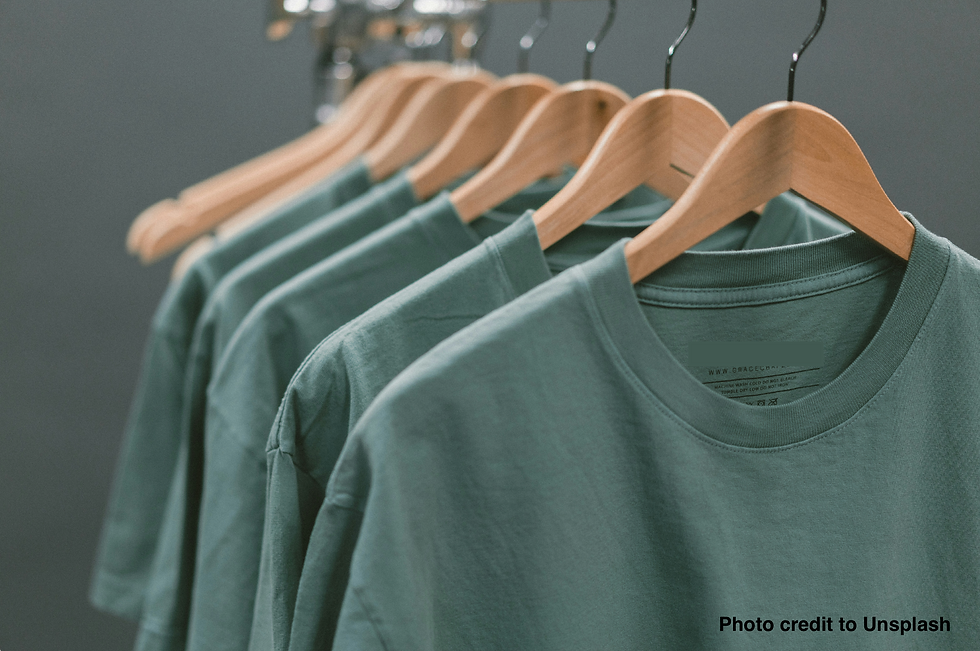What goes into making one T-shirt?
- Athena Li
- Mar 20, 2024
- 2 min read

Everyone owns a cotton T-shirt. But when you are getting dressed, have you ever wondered what goes into making that T-shirt? Globally, we sell 2 billion T-shirts every year, making it the most common clothing article in the world.
The process of making a cotton T-shirt starts in farms, where cotton is harvested by machines. 22,700,00 metric tons of cotton are produced each year. Cotton is one of the most water and pesticide consuming plants, and is extremely harmful to the environment. It takes 2700 gallons of water just to make one T-shirt, enough for one person to drink for 900 days! Pesticides can also contaminate soil, and are toxic to many other organisms.
Once the cotton leaves the farm, it is shipped to a spinning facility, where machines twist the cotton into ropes of yarn called slivers. Those slivers are machine-woven into fabric, which are then treated with heat and chemicals. Once the fabric is woven, it is bleached and dyed. 70% of those bleaches and dyes contain harmful compounds such as lead, chromium, mercury, and cadmium, which can sometimes cause cancer. The harmful substances from these factories can spill out and pollute nearby bodies of water, causing an increase in disease and destroying aquatic ecosystems.
After being woven and dyed, the fabric is sent to factories in which humans will stitch the fabric into T-shirts. Many of these factory workers toil in hostile (sometimes illegal) conditions, such as poor air quality, extreme heat, and long hours (some people have to work for 72 hours without any breaks), and may receive as little as 3 cents per hour. This may sound grueling enough, but imagine doing that as a child: 250 million children, some as young as five, are forced to work in sweatshops around the world. Is cheap clothing really worth the price of so many lost childhoods?
Over the last 30 years, there has been a 400% increase in clothing consumption, making fashion the second largest polluter in the world. The making of one cotton T-shirt is harmful to humanity and the environment, but luckily there are a few solutions.

To begin, consider buying from second hand shops, choosing organic or fair trade fabrics, and shopping locally. Not only are second hand shops cheaper, they are a way to lessen the waste from throwing away clothing. Organic cotton eliminates all the harmful toxins that come from pesticides, and fair trade clothes guarantee safe working conditions and fair pay for farmers and workers. Buying products manufactured in your own country reduces the carbon footprint of your shirt, because it does not require as much transportation.
Nothing lasts forever, but you can still make a difference by donating, recycling, or repurposing clothes instead of throwing them away. Finally, think about how many articles of clothing you own. How many of those do you truly need?
So the next time you put on a cotton T-shirt, take time to think about the journey it took to get to your closet, and the impact it had on the world. By making informed decisions, we can save the planet one T-shirt at a time.
Bibliography:





Comments